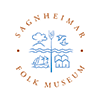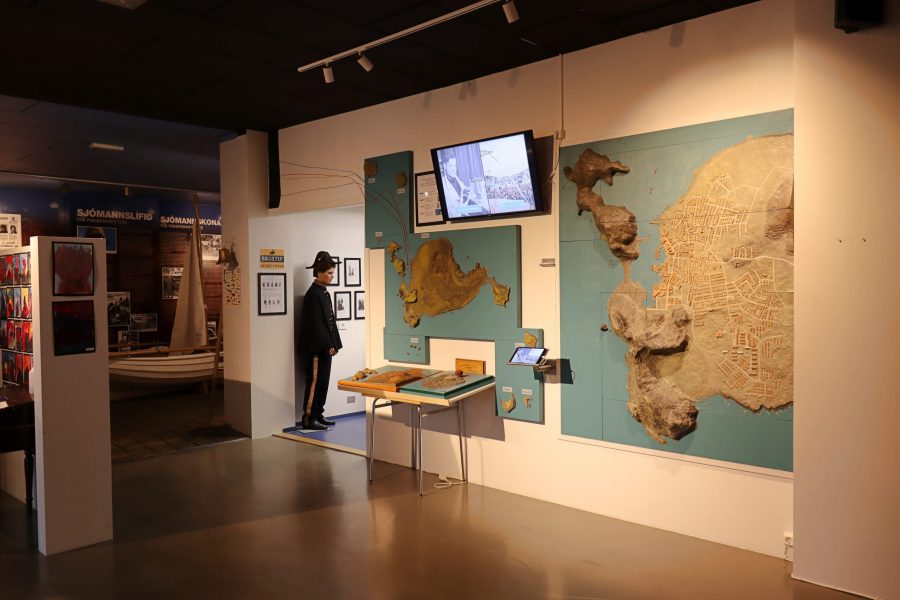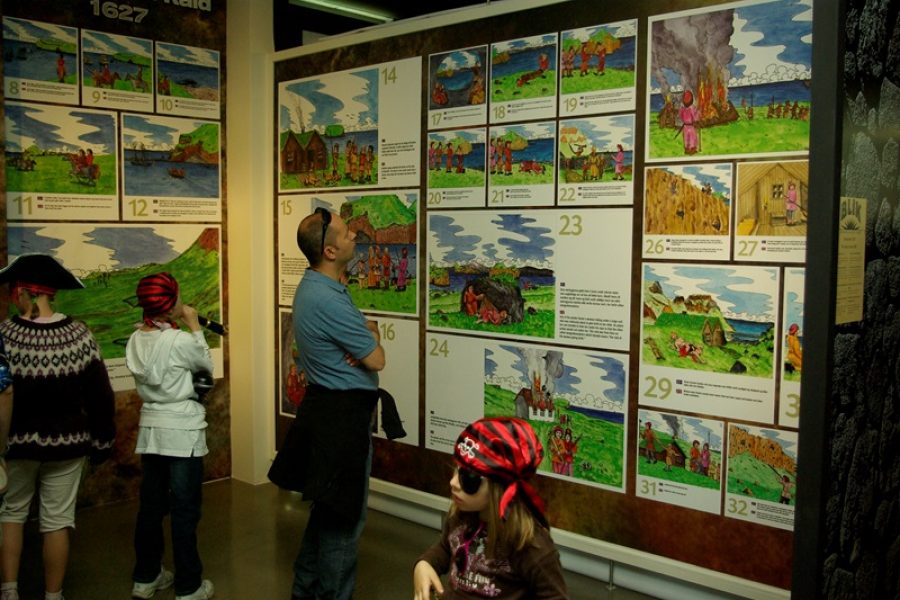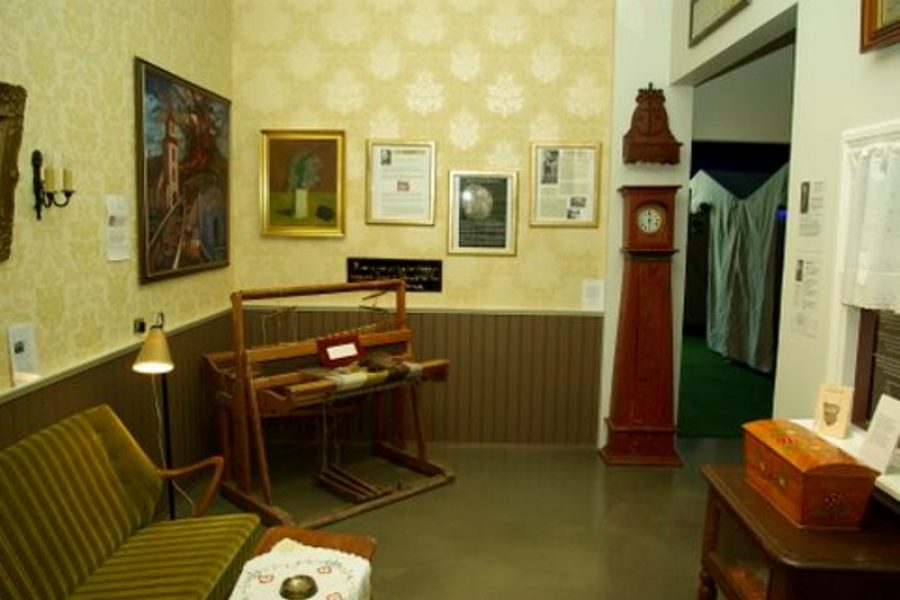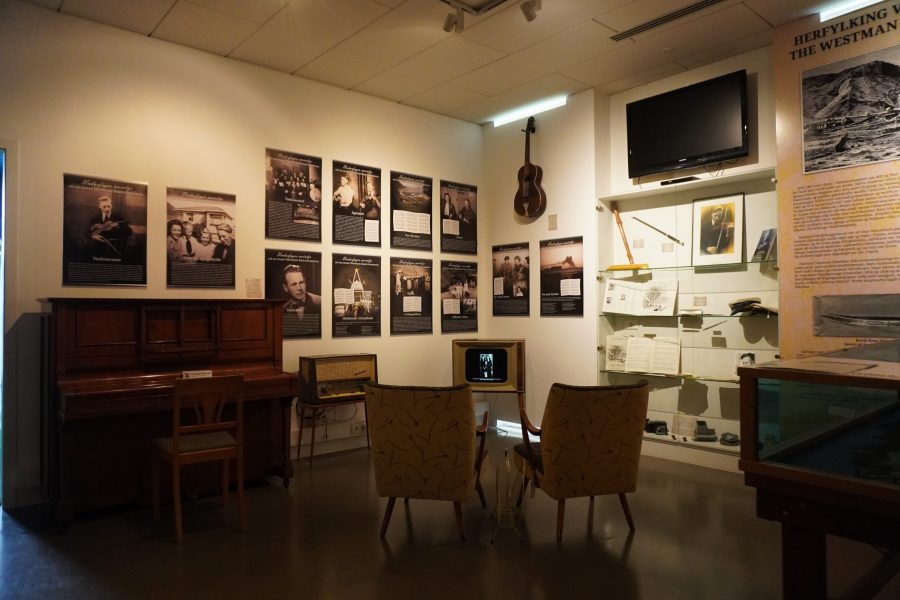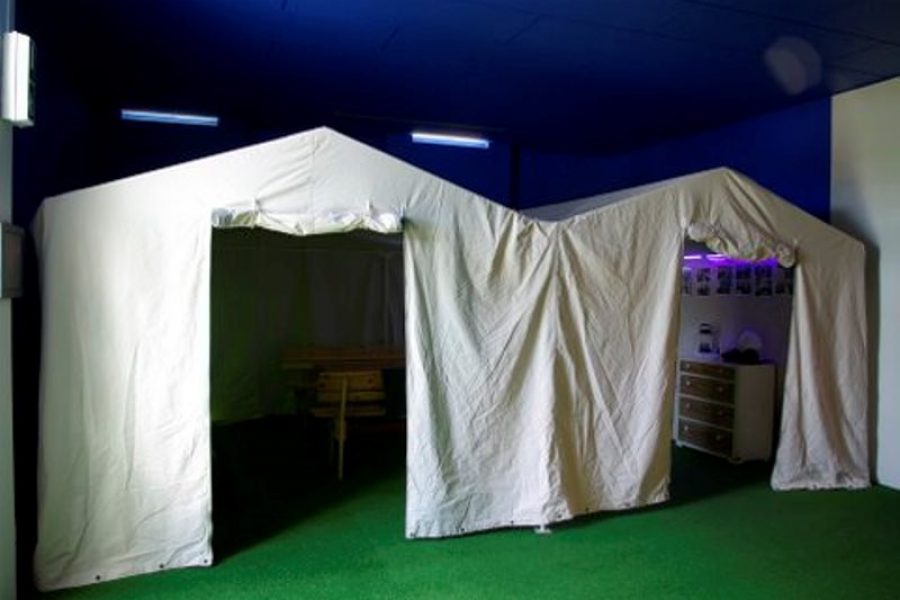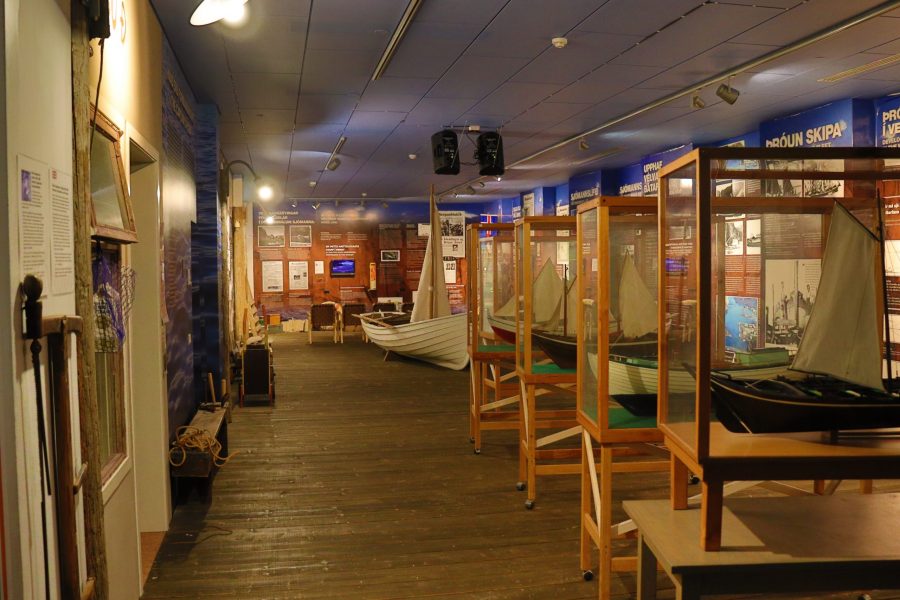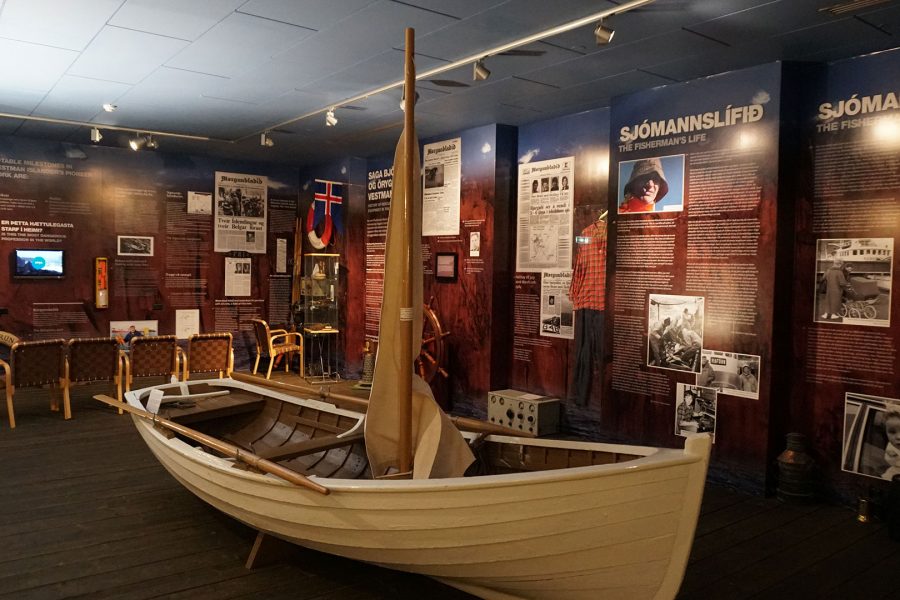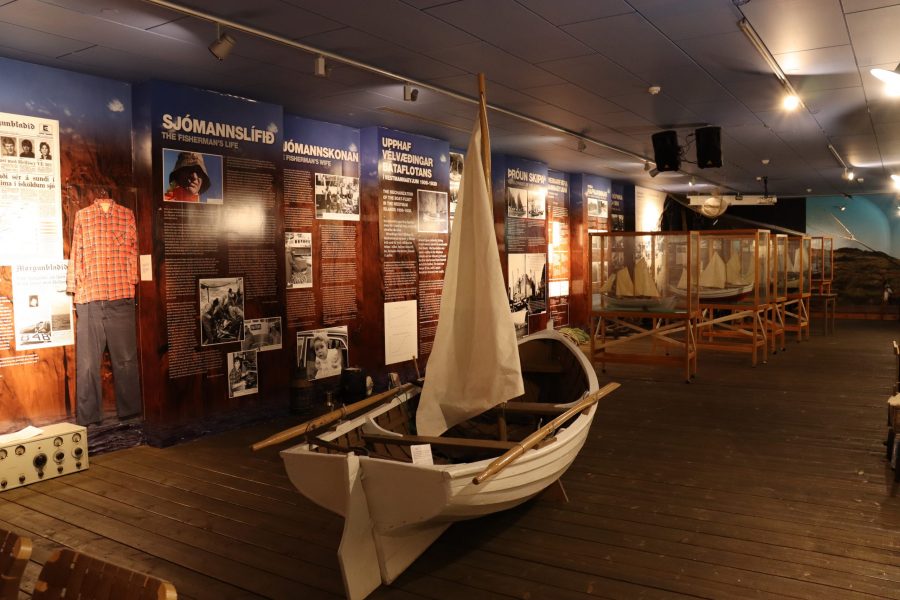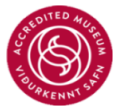The museum holds several permanent exhibits though there are always smaller temporary exhibits and various events and special affairs that are advertised when the occasion arises.
Eruption on Heimaey
In the early hours of January 23rd 1973 the volcano Eldfell erupted on Heimaey and nearly the whole population of 5.300 had to immediately be evacuated to the mainland. That fateful night and following days are chronicled in an array of photos. There are also recordings of islanders telling their personal experiences of the eruption and the rebuilding of their town in the aftermath.
The Festival
The annual Vestmannaeyjar Festival was first held in 1874 and nearly every year since. It has always been an important cultural gathering of islanders with all its traditions including the indispensable music of the island composer, Oddgeir Kristjánsson. Visitors to the museum can seat themselves in one of the traditional Festival tents that are erected each year by the islanders for this special weekend.
The Algerian Pirate Raid
On July 16th 1627 three ships sailed up to the eastern shores of Heimaey. Three hundred pirates disembarked and captured 242 of the islanders whom they sailed with to Algeria where they were sold at the slave markets. The story of this fateful day is captured in a large caricature-style mural of sequential panels. The pirate cave provides fun for the children.
Women
Seldom is the importance of a woman’s station felt as strongly as in a fishing port. Women often hold sole responsibility for their homes and the welfare of their families for varying periods of time, short and long. Light is shed on the lives of a few of these women as well as their contributions in medicine, hand crafting and art.
Mormons
The Icelandic Mormons have their history exhibited at the museum. The first Icelandic Mormon missionaries, Þórarinn Hafliðason from Vestmannaeyjar and Guðmundur Guðmundsson from Rangárvellir on the south coast, worked in Vestmannaeyjar. Between 1854 and 1914 about 200 islanders emigrated from the island to the Western World in search of a better life. The Mormon exhibit was made in collaboration with Brigham Young University in Utah along with a large group of enthusiasts who have researched the history and destiny of these pioneers.
The life and music of Oddgeir Kristjánsson
Oddgeir Kristjánsson was a prominent composer, conductor
and a driving force for music in Vestmannaeyjar.
and a driving force for music in Vestmannaeyjar.
A collection of Icleandic birds including rare specimens
A stunning collection of birds caught and taxidermized by Ólafur Tryggvason. It includes some rare specimens of puffin.
Captain Kohl and the Army
The islanders are the only people in the country who can boast about the fact that they had their own army. The origin of this story lies with the Danish commissioner, Captain Kohl, who came to the island in 1853. Captain Kohl was a determined and eager leader who took an active part in all of the soldiers' lives and responsibilities. With emphasis on traditions he taught them sports and good manners, built houses and roads. He held Flag Day in the Herjólfsdalur valley where the Festival is now annually celebrated. Families gathered there to compete in sports and eat picnic lunches.
The Harbour Area
A large part of the exhibit hall contains the harbour and dock area where fishing and processing of the catches are portrayed. At the old radio center a visitor can listen to harrowing narratives of life at sea and unbelievable tales of heroism and rescues. The islands' innovators and entrepreneurs tell the history of the building of the harbour, ships and processing of the huge fish catches. An old bait shack and fish factory dormitory (verbúð) are also reconstructed in this exhibit. The cliff hunters’ history and lore are also reflected in this exhibit area with a reconstructed hunting cabin typical of the cabins on the outer islands.
